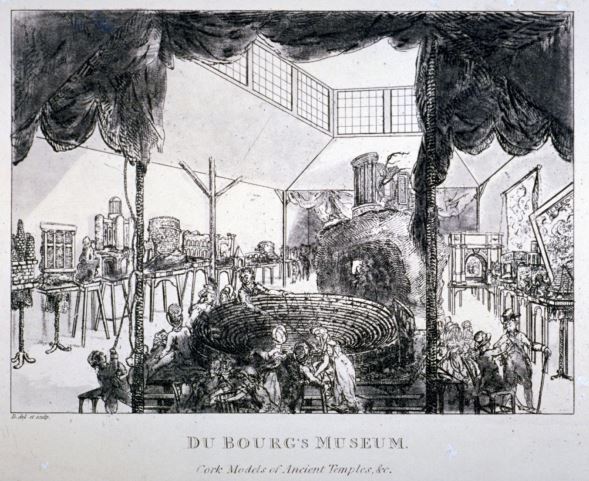
London Metropolitan Archives
The Picture of London for 1820
Although often dismissed as a showman, modern scholars have credits Richard Du Bourg as one of the first artists in Europe to make cork models of Roman Empire, and other, significant buildings and ruins. For almost fifty years, his museum was “a key site for public engagement with classical antiquity” attracting nobility, merchants, architects, travelers ready for the Grand Tour, and children (https://ronjournal.org/files/sites/140/2018/12/RoN70_01_Davies.pdf). A notable performer and storyteller, he brought new, multimedia techniques to provide the spectacle audiences craved (https://academic.oup.com/jhc/article-abstract/29/2/251/2503305).
Made of cork, his models included the Amphitheatre of Verona, a view of Mount Vesuvius at the time of Eruption, Virgil’s Tomb, Stonehenge, Somerset House and a variety of other classical sites.
A staple of museums in London during the Regency, the exhibition would inspire curiosity among a variety of people and bring to life cultural sites many were not able to travel to.
See some modern pictures of some of the collection: https://collections.museumvictoria.com.au/items/715107
To see a catalogue of models: https://archive.org/details/dubourgsexhibiti00dubo/page/2
To read a descriptive catalog of exhibition: https://books.google.com/books?id=LBPy4kt68BIC&dq=du%20bourg’s%20models&pg=PA3#v=onepage&q=du%20bourg’s%20models&f=false









